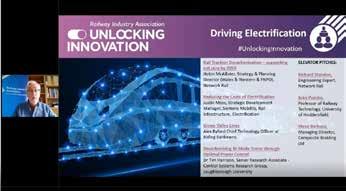14
ELECTRIFICATION & POWER
SHAUN COOPER
The changing face of
electrification
T
he removal of diesel-powered trains from the national rail network by 2040 (2035 in Scotland) is key to achieving the UK Government’s net-zero-carbon target by 2050.
To meet its sector targets, the rail industry must continue to find sustainable and costefficient solutions. Electrification is one of the key drivers, along with hydrogen and battery train technology, which will enable a broad range of benefits to be realised: improving people’s health, creating better places to live and travel in, and driving clean economic growth.
Rail Engineer | Issue 187 | November/December 2020
A changing market Over the last decade, electricity distribution has undergone significant changes. Not only has there been a trend towards the decentralisation of power generation, but the use of renewable energy has also increased significantly. Renewables suppliers are now producing more than 20 per cent of the UK’s electricity,
a share which is forecast to increase to 50 per cent by 2025. Rail electrification has also seen some major changes, with benefits coming from both product and process innovation. One example of this is the use of static frequency converter (SFC) technology, which addresses the issue of phase imbalance. Whereas the UK electricity network operates on a three-phase balanced system, railway power supplies have traditionally been connected directly using just










